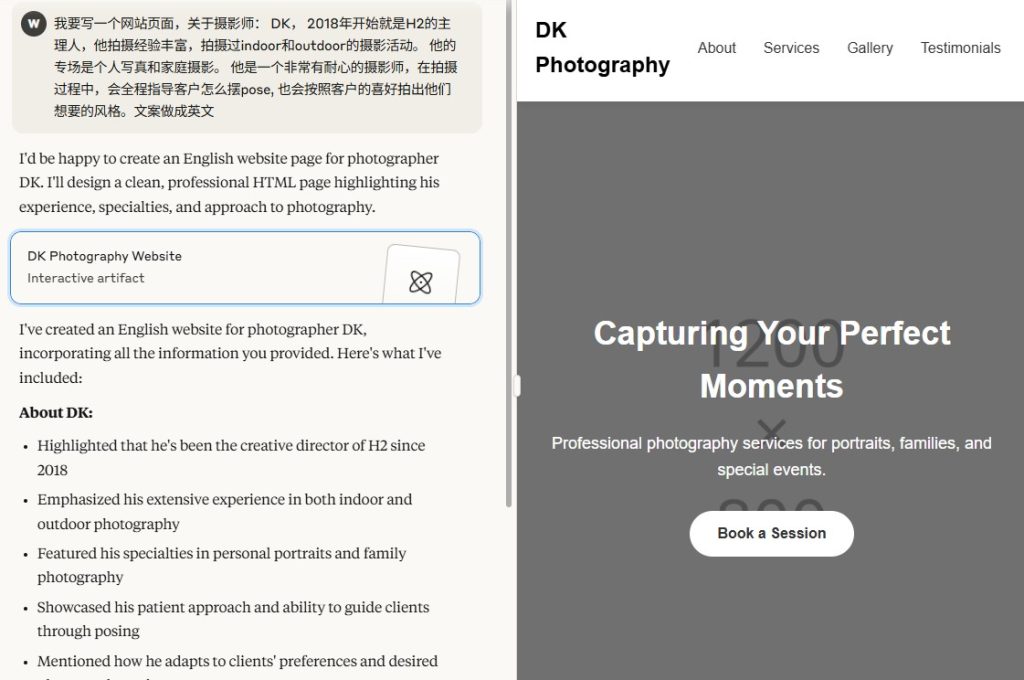In today’s digital age, user-generated content (UGC) has become a powerful tool for businesses and brands to engage their audience, build trust, and drive success. UGC is any content created by unpaid contributors, such as customers, fans, or followers, that promotes or references a brand or product.
Leveraging UGC can significantly impact your digital marketing strategy, but it requires careful crafting and cultivation. In this blog, we’ll explore the importance of UGC, strategies for encouraging it, and how to make the most of the content once you have it.
The Power of User-Generated Content (UGC)
User-Generated Content (UGC) is a dynamic force in today’s digital landscape, reshaping the way businesses and brands interact with their audience. It’s a testament to the growing influence of social media marketing and the democratisation of content creation. The power of UGC cannot be understated, and in this article, we will delve into its transformative effects on marketing, engagement, and brand authenticity.
Authenticity and Trust
One of the most significant advantages of UGC is its ability to inject authenticity into a brand’s narrative. Traditional advertising often carries a degree of scepticism with it. Consumers are aware that brands have an agenda – to sell their products or services. However, UGC sidesteps this scepticism.
When real people, unaffiliated with the brand, share their experiences, it carries a sense of authenticity that money can’t buy. These individuals are not being paid to promote the brand; they are genuinely enthusiastic about it. This authenticity builds trust among potential customers.
Enhanced Engagement
UGC is a potent catalyst for engagement. It invites consumers to participate actively in a brand’s story. When customers or fans share their content featuring a product or service, they become co-creators of the brand’s narrative. This active involvement goes beyond passive consumption and fosters a sense of community and belonging.
Moreover, UGC often leads to conversations and interactions between the brand and its audience. This dialogue can strengthen customer relationships, as it shows that the brand values and listens to its customers. It also offers an opportunity for brands to address any concerns or issues directly, enhancing customer satisfaction and loyalty.
Cost-Effective Marketing
Creating high-quality content, whether it’s images, videos, or written material, can be expensive and time-consuming. UGC offers a cost-effective alternative. Instead of investing heavily in content creation, brands can tap into the creativity of their existing community.
This not only reduces marketing costs but also generates a constant stream of fresh and diverse content. It’s like having an army of brand advocates who are willing to promote your products or services for free.
Expanded Reach
UGC is a viral phenomenon waiting to happen. When people create content related to a brand, they often share it with their friends, family, and followers. This sharing extends the brand’s reach far beyond its immediate customer base.
The organic nature of this sharing also makes it more impactful. People trust recommendations from friends and peers more than they trust advertisements. UGC leverages this trust to help brands connect with new audiences.
Demonstrating Real-World Use
UGC provides a practical demonstration of how products or services are used in the real world. Potential customers can see how others have integrated the brand into their lives, solving problems or meeting their needs. This real-world context is often more persuasive than any marketing copy.
Now that we understand the importance of UGC let’s delve into crafting and cultivating it effectively.
Strategies for Crafting UGC
Crafting user-generated content (UGC) is a collaborative process that involves engaging your audience to create content that promotes your brand or product. Here are some effective strategies for encouraging and crafting UGC:
Create Shareable Products or Experiences:
The first step in generating UGC is to offer products, services, or experiences that are inherently shareable. If your offerings are unique, exciting, or valuable, customers are more likely to want to share them with others. Think about what makes your brand or product special and focus on those aspects.
Leverage Social Media:
Social media platforms are a natural breeding ground for UGC. Encourage customers to share their experiences, reviews, and photos related to your brand or product on platforms like Instagram, Twitter, and Facebook. Use branded hashtags to make it easy for users to find and contribute to the conversation.
Run Contests and Challenges:
Organise contests or challenges that encourage your audience to create content. For example, you can ask users to submit photos or videos of them using your product in unique ways or in specific locations. Offer enticing prizes or recognition for the best entries to boost participation.
Feature User Stories:
Showcase stories and testimonials from satisfied customers. Ask customers to share their experiences using your product or service, and then highlight these stories on your website or social media. This not only generates UGC but also builds trust and authenticity.
User-Generated Reviews:
Encourage customers to leave reviews and ratings on platforms like Yelp, Google, or your website. Positive reviews serve as UGC that potential customers often rely on when making purchasing decisions. Respond to reviews, both positive and negative, to show that you value customer feedback.
Incorporate Customer Feedback:
Actively seek and incorporate customer feedback into your product or service improvements. When customers see that their suggestions are being taken seriously, they feel more invested in your brand and are more likely to generate UGC in the future.
Collaborate with Influencers:
Partner with social media influencers or micro-influencers who align with your brand. They can create content that features your products or services and encourages their followers to do the same. Influencers can significantly amplify your UGC efforts.
User-Generated Content Hub:
Create a dedicated section on your website or social media profiles to curate and display UGC. This provides an incentive for users to contribute, as they may see their content featured prominently.
Engage and Respond:
When users create UGC, engage with them by liking, commenting, and sharing their content. This interaction not only shows appreciation but also encourages others to participate. Respond promptly to any questions or comments users may have.
Provide Clear Guidelines:
If you have specific requirements or guidelines for UGC, make them clear and easily accessible. For example, if you want users to create video reviews, provide instructions on how to do so effectively.
Incorporating these strategies into your marketing and engagement efforts can help you craft meaningful and compelling user-generated content. Remember that UGC should not feel forced but rather a natural expression of your customers’ satisfaction and enthusiasm for your brand or product.
Cultivating and Leveraging UGC
Once you start receiving UGC, it’s vital to manage and leverage it effectively.
1. Seek Permission
Always ask for permission to use UGC. Send a direct message or comment on the contributor’s post, requesting their consent to feature their content on your website, social media, or marketing materials.
2. Curate Carefully
Select the best UGC that aligns with your brand image and messaging. High-quality content that resonates with your target audience will have a more significant impact.
3. Give Credit
Always give credit to the content creator when sharing their UGC. This not only shows appreciation but also encourages others to contribute.
4. Offer Incentives:
Incentivise users to generate UGC by offering discounts, exclusive access, or early product releases. This rewards their loyalty and encourages them to contribute.
5. Share Stories
Craft stories around UGC to make it more compelling. Highlight customer experiences, success stories, or transformations that showcase the real-life benefits of your product or service.
6. Diversify Platforms
Share UGC across various platforms to reach a broader audience. Incorporate it into your website, social media profiles, email campaigns, and even offline marketing materials if appropriate.
7. Monitor and Measure
Track the performance of your UGC. Use analytics to determine which pieces of UGC are most effective in achieving your goals. Adjust your strategy accordingly.
Final Thoughts
In conclusion, user-generated content is a valuable asset for any brand or business. Crafting and cultivating UGC requires a combination of creating a welcoming community, providing clear guidelines, and running engaging campaigns. Once you have a steady stream of UGC, manage it carefully and leverage it strategically to build trust, engage your audience, and drive success.
With the right approach, UGC can become a cornerstone of your marketing strategy, helping you connect with your customers on a deeper level and stand out in a crowded digital landscape.
However, if you’re looking to maximise the impact of UGC and streamline the process, partnering with a digital marketing company can be a game-changer.
You can harness the full potential of user-generated content while freeing up your internal resources to focus on other essential aspects of your business. Their expertise, experience, and tools can help you craft and cultivate UGC more effectively, ultimately driving success and growth for your brand.








